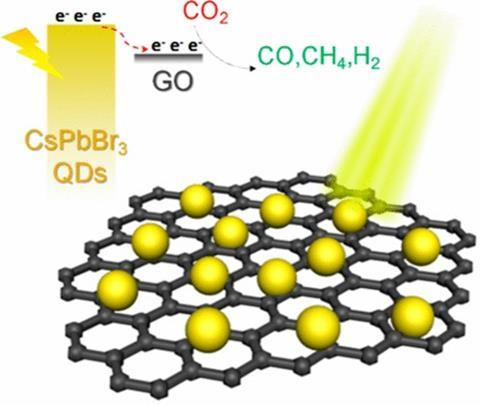Researchers from Sun Yat-Sen University in China have created a composite of graphene oxide and perovskite quantum dots that can reduce CO2 when stimulated with light. It is referred to as the first known example of artificial photosynthesis based on perovskite quantum dots and GO.

The team prepared quantum dots semiconductor nanoparticles of a highly stable cesiumlead halide perovskite, as well as a composite material made of these quantum dots and graphene oxide. Both materials showed an efficient absorption of visible light and strong luminescence. The team used these products to achieve a fundamental step in artificial photosynthesis the reduction of CO2. To simulate sunlight, they used a xenon lamp with an appropriate filter.
Perovskite quantum dot photocatalysts reportedly surpassed the efficiency of cadmium sulfide and other state-of-the-art materials in the conversion of CO2 to carbon monoxide and methane. The synergetic effect of the composite was also demonstrated when combined with graphene oxide, perovskite QDs achieved photocatalytic performances 26% higher than QDs alone. According to the team, graphene oxide boosts the efficiency of the QDs ‘improving the charge separation and transportation.’